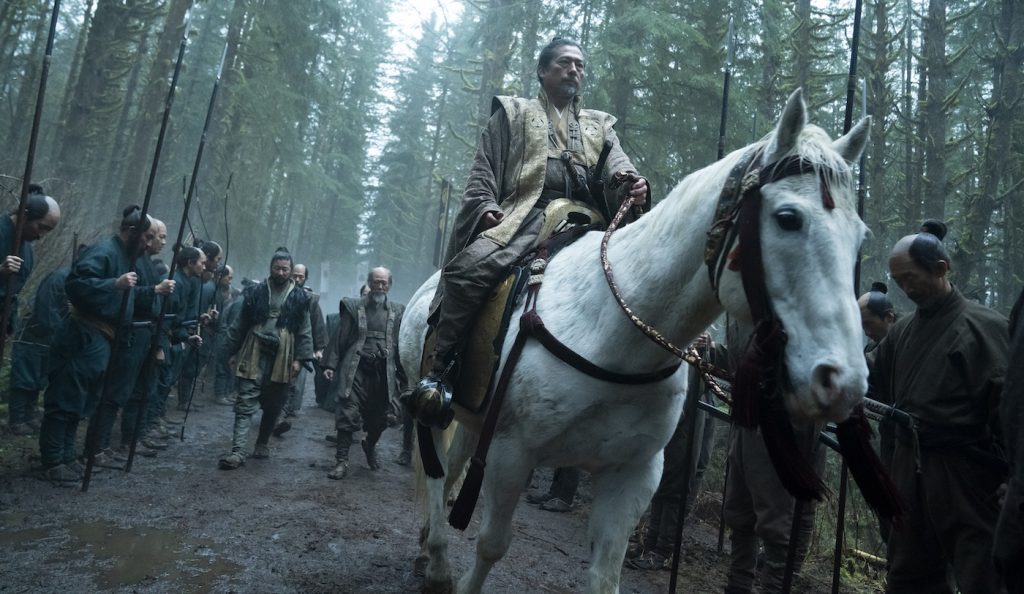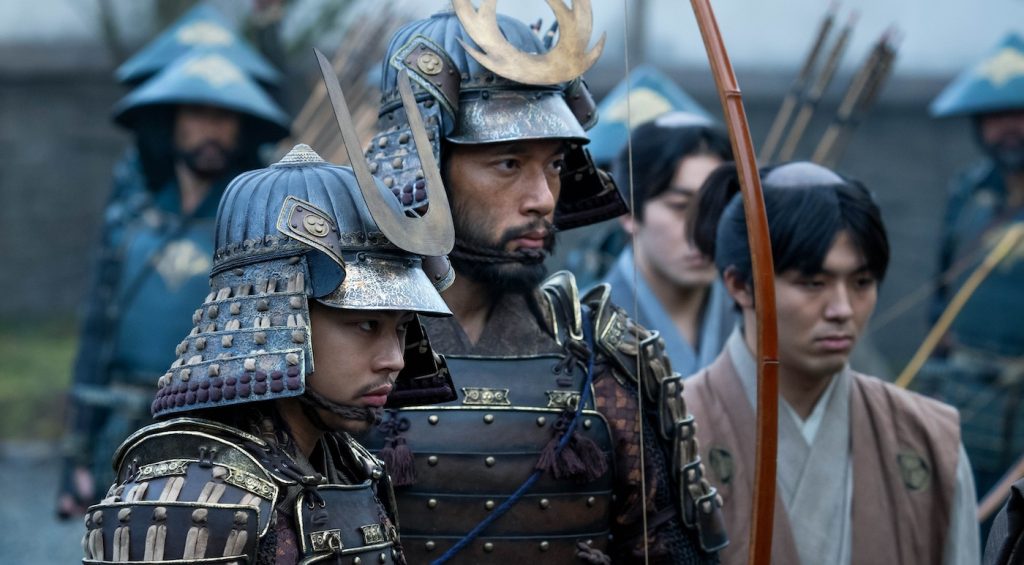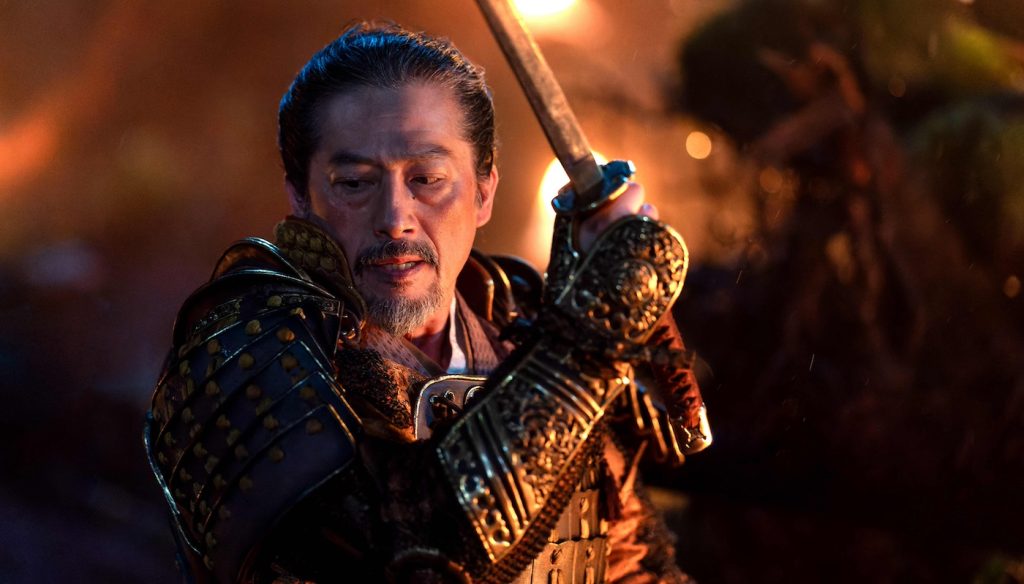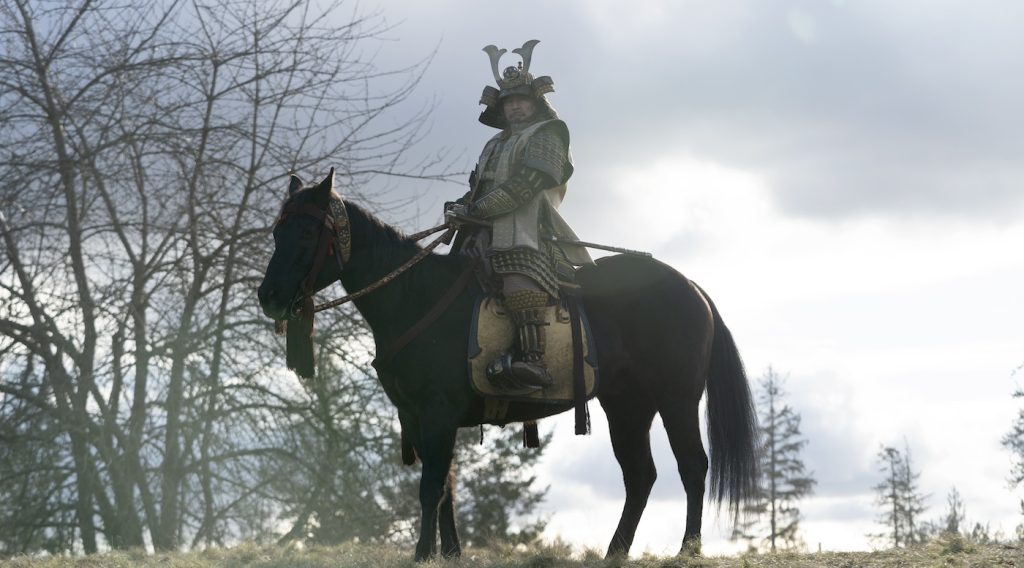The Samurai Sword and the Flaming Arrow: Inside the Stunts of “Shōgun” – Part One
It has been a very busy year for stunt coordinator Lauro David Chartrand-DelValle. Not only is he on one of this season’s most-watched scripted series on broadcast—Tracker on CBS—he is also the second unit director on FX’s critically acclaimed hit, Shōgun. Still maintaining its 99% Rotten Tomatoes score after a 10-week run, the historical saga based on James Clavell’s bestselling novel is shaping up to be a frontrunner at the upcoming Emmy Awards.
Based on the events leading up to the real-life Battle of Sekigahara in 1600 feudal Japan, the story opens when British sailor John Blackthorne’s (Cosmo Jarvis) ship drifts into coastal Japan amidst a savage power struggle between Lord Toranaga (Hiroyuki Sanada) and his rivals within the ruling class. An astute strategist, Toranaga sees the Englishman as a potential solution to his predicament, assigning noblewoman Lady Mariko (Anna Sawai) as Blackthorne’s translator.
Filmed entirely in Vancouver, the sprawling production deployed Chartrand-DelValle’s team of stunt professionals over 14 months. A passionate student of Japanese martial arts, he was thrilled with co-creators Justin Marks and Rachel Kondo’s unrelenting commitment to authenticity in bringing every facet of this story to life. Two decades after he and Sanada worked together on the 2003 period drama The Last Samurai, this extravagant 10-part miniseries gave him another chance to dive back into Japanese history, only this time with a lot more room to recreate history, one stunning action set piece at a time.
It’s amazing how, after 21 years, The Last Samurai’s DNA is still embedded in the production of Shōgun. Some of the textile artists on Samurai worked on this series, Sanada played master swordsman Ujo, and of course, you worked on that film as well.
I was the fight coordinator. I got to open my toolbox on The Last Samurai and used all the Japanese techniques I’d learned from Sensei Fumio Demura [the late martial arts legend who was Pat Morita’s stunt double in several of the Karate Kid films], like Aikido, Judo, Kobudō (weaponry), Iaidō (swordsmanship), and Batto. It really gave me a well-rounded ability to work with Mr. [Tom] Cruise and coordinate over 200 fight scenes working under [stunt coordinator] Nick Powell.
You also met Sanada on Samurai, which came full circle in this series.
He was number three on the call sheet, and I spent many months working with Hiroyuki. When they called me for Shōgun, I heard he had recommended me because of Samurai. To get one major samurai epic film in your career is already so special. So, when Shōgun came around, I was just over the moon!


How big was your choreography team? How long was the training?
Boot camp for Shōgun was much like what I did for Samurai. We trained in military movement, archery, weapons, and physical movements for two months before shooting with all the extras, stunt guys, and actors. On my main team, I had two of the guys from Japan who worked on Samurai – fight choreographers Kenji Sato and Nobuyuki Obikane. And Sanada-san brought his stunt double, Hiroo Minami, from Los Angeles. There’s my assistant stunt coordinator, Sharlene Royer. We were the core team, plus a rigging team. On some episodes, we needed 40 guys, but on others, we only needed 10-15, so it fluctuated as we went through the season.


How many stunt performers worked on this?
Around 60. There’s a limited number we could find in Vancouver since we needed them to be of Asian descent. When we first started, we hoped to hire only Japanese stunt performers, but that was impossible unless we flew everyone in from Japan. Even in L.A., there aren’t that many. I had a few Japanese stunt performers, and the others were of other Asian ethnicities.
What was the prep and training like?
Stunt rehearsals were at Mammoth Studios [Vancouver]. We built replicas of some of the sets for rehearsals so we had the exact measurements. We’d train for the episode we were filming while training for the next episode. I’d discuss the sequence with my team, what I wanted to happen, the movements I wanted, and left them to choreograph. Then, I’d tweak it and tighten it up, Previz it for the producers, directors, and actors. Since I knew the era and what we’re looking for, most of the time, we were pretty close.
With this series set in 1600 Japan, how are the stunts different from other action projects?
In more contemporary stories, there are more spins, flips, and Hollywood styles, but what we needed was more realistic. This is one cut, one kill [with the swords] – it’s straight to the point: the samurais were here to kill people.
Why is it important to focus on character-driven action choreography?
You have to lay out the structure—where the action starts and ends so that the story is told through the action and not just swinging swords for the sake of swinging swords. That’s always the big thrill to me, melding the action into the story so that when we get out the other side, they pick up their dialogue exactly where they’re supposed to and tell the story.
How did you design Toranaga’s fighting style compared to Mariko’s, Lord Ishido’s, or Blackthorne’s to reveal their personalities, backstories, and motivations?
Sanada-san’s style came with him; I didn’t have to do anything there. He is the cream of the crop and really brought that essence and formidability to Toranaga. Everything he did was succinct: he waited until he had the perfect moment to cut. So, it was usually just one movement, maybe two at the most. It was like a game of chess when he was fighting.


In Episode 3, Lord Toranaga flees in disguise in a caravan before they are attacked in the woods. What went into that sequence?
That was the most difficult sequence in the series. We were in the forest in the wintertime with pouring rain with guys shooting arrows, flaming arrows, and on horseback getting shot off. We had multiple swordfights, spears, and everything in the mud and rain. The guys were freezing because they were in those costumes without rain gear – I felt so bad for them. We had to go back and clean it up with the second unit because we just couldn’t get it all on the main unit under those conditions. We changed it from how it was written once Justin and I realized that we weren’t using Sanada-san in any of the fights. Originally, Toranaga was just taking cover in that scene. So, we added a big fight scene for him, which was a big honor for me because I got to have Sanada in my second unit. Usually, as a second unit director, you don’t often get the main star on your set.
Click here for the conclusion of our conversation with Chartrand-DelValle, where he shares what went on behind the ferocious chain shot sequence and how action choreography sheds light on Mariko’s trajectory.
For more on Shōgun, check out these stories:
“Shōgun” Score: Atticus Ross & Co Meld Ancient Soul to Modern Tech
The Sartorial Feast of Feudal Japan with “Shōgun” Costume Designer Carlos Rosario – Part Two
Featured image: “SHOGUN” — Pictured: Hiroyuki Sanada as Yoshii Toranaga. CR: Katie Yu/FX




